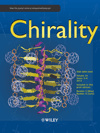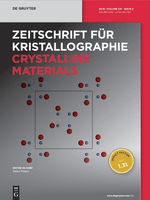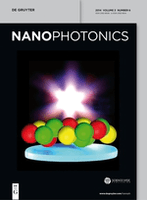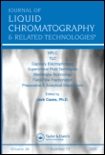
Liquid Crystals and their Application
Scope & Guideline
Transforming Research into Practical Solutions with Liquid Crystals
Introduction
Aims and Scopes
- Study of Liquid Crystal Properties:
Research on the fundamental properties of liquid crystals, including their thermodynamic behavior, optical characteristics, and molecular interactions. - Development of Novel Liquid Crystalline Materials:
Synthesis and characterization of new liquid crystalline compounds and composites, including those with enhanced functionalities or novel applications. - Applications in Optoelectronics:
Exploration of liquid crystals in optoelectronic devices, such as modulators, displays, and sensors, focusing on their performance and efficiency. - Nanotechnology Integration:
Investigation of the incorporation of nanomaterials within liquid crystalline systems to enhance their properties and functionalities. - Biological Applications:
Research on the use of liquid crystals in biological systems, including drug delivery mechanisms and biocompatibility studies.
Trending and Emerging
- Integration of Quantum Dots and Nanoparticles:
There is a growing trend in exploring the incorporation of quantum dots and other nanoparticles into liquid crystalline matrices, enhancing optical properties and enabling new functionalities. - Biocompatibility and Drug Delivery Systems:
Research on liquid crystals as drug carriers and their interactions with biological systems is gaining traction, reflecting an increasing interest in biomedical applications. - Advanced Characterization Techniques:
Emerging methodologies for characterizing liquid crystals, such as dynamic dielectric spectroscopy and K-means analysis, are becoming more prevalent, indicating a trend towards sophisticated analytical techniques. - Photoresponsive and Stimuli-Responsive Systems:
The development of liquid crystalline materials that respond to external stimuli (like light or electric fields) for applications in smart materials and devices is increasingly popular. - Self-Assembly and Supramolecular Chemistry:
Research focusing on self-assembly processes and supramolecular organization in liquid crystalline systems is on the rise, pointing to a deeper exploration of molecular interactions and material design.
Declining or Waning
- Traditional Liquid Crystal Displays (LCDs):
Research on conventional liquid crystal display technologies appears to be decreasing, likely due to saturation in the market and the emergence of newer technologies such as OLEDs and microLEDs. - Basic Thermodynamic Studies:
There is a noticeable decline in publications focused solely on basic thermodynamic studies of liquid crystals, as the field moves towards more applied research and interdisciplinary approaches. - Static Optical Properties Without Application Context:
Papers that investigate static optical properties of liquid crystals without linking them to practical applications or new technologies are less frequently published, indicating a shift towards more integrated research.
Similar Journals

Nano Express
Driving research excellence in nanotechnology and materials.Nano Express is an esteemed open-access journal published by IOP Publishing Ltd, dedicated to advancing research in the fields of nanotechnology and materials science. Since its launch in 2020, the journal has swiftly established itself as a vital resource for researchers and professionals, garnering significant recognition in various domains, including biomaterials, electronic, optical and magnetic materials, and polymers and plastics. With a commendable categorization in Scopus quartiles, it ranks in Q2 for Electronic, Optical and Magnetic Materials, and maintains a top percentile in several others, exemplifying its commitment to high-quality research dissemination. Located in the United Kingdom, this journal fosters a global dialogue among experts and newcomers alike, facilitating open access to innovative research that drives the future of nanotechnology. By offering a platform for groundbreaking studies and reviews, Nano Express aims to bridge the gap between theoretical understanding and practical application, championing the development of next-generation materials that have the potential to transform various industries.

LIQUID CRYSTALS
Bridging Chemistry and Physics in Liquid Crystal ResearchLIQUID CRYSTALS, published by Taylor & Francis Ltd, is a premier academic journal dedicated to the interdisciplinary study of liquid crystal materials and their applications. Established in 1986, this journal has become a vital platform for researchers and professionals alike, contributing to advancements in chemistry, condensed matter physics, and materials science, as reflected in its notable impact factors and ranked status in multiple categories, including Q2 in Chemistry and Q3 in Condensed Matter Physics as of 2023. With a focus on innovative research and practical applications, LIQUID CRYSTALS spans a broad spectrum of topics, including but not limited to liquid crystal displays, photonics, and soft matter physics, making it an essential resource for those exploring the frontiers of liquid crystal technology. While the journal operates under a traditional access model, the rich insights and cutting-edge findings it publishes serve to greatly benefit researchers, professionals, and students in the field. Access the journal's content to stay updated on groundbreaking developments from 1986 to 2024 and join a community committed to scientific excellence.

Liquid Crystals Today
Advancing Knowledge in Liquid Crystals and BeyondLiquid Crystals Today, published by Taylor & Francis Ltd, is an essential platform for researchers and professionals focusing on the fascinating field of liquid crystals. With an ISSN of 1358-314X and an E-ISSN of 1464-5181, this journal covers significant advancements in areas such as Condensed Matter Physics, Inorganic Chemistry, and Materials Chemistry, reflected in its recent classification within the Q3 quartile across these categories. Established in 1991 and with a rich history of disseminating impactful research, the journal provides critical insights and discussions pertinent to the scientific community. Although it does not follow an open-access model, its rigorous peer-review process ensures high-quality publications that contribute to the body of knowledge in liquid crystals. Researchers looking to stay updated in this dynamic field will find Liquid Crystals Today an invaluable resource.

ChemNanoMat
Innovating Solutions for a Sustainable TomorrowChemNanoMat is a prestigious academic journal published by WILEY-V C H VERLAG GMBH, dedicated to the rapidly evolving fields of nanoscale materials and their applications in diverse areas such as biomaterials, energy engineering, and environmental sustainability. With the journal's ISSN 2199-692X and recognized quality, as evidenced by its Q2 rankings across multiple categories—including Biomaterials and Renewable Energy—ChemNanoMat serves as a crucial platform for researchers, professionals, and students to disseminate their findings and foster collaborations. Operating from Germany, the journal encourages the exploration of innovative materials solutions to meet tomorrow's challenges. While it does not currently offer open access options, it remains highly regarded in the academic community with a competitive impact factor that emphasizes its relevance and influence in guiding future research directions. Covering a broad scope from 2015 through 2024, ChemNanoMat is key for anyone invested in the advancement of materials chemistry and related scientific fields.

CHIRALITY
Illuminating the Path of Chiral Discovery and ApplicationCHIRALITY is a prominent journal in the field of chemistry, published by Wiley. Established in 1989, it has become a critical resource for researchers and professionals interested in the intricate study of chiral compounds across various applications, including analytical chemistry, catalysis, drug discovery, organic chemistry, pharmacology, and spectroscopy. With an ISSN of 0899-0042 and an E-ISSN of 1520-636X, CHIRALITY currently holds a Q2 ranking in Analytical Chemistry and Q3 rankings in several other categories based on the latest assessments. Although it does not offer open access, the journal is widely recognized for disseminating high-quality research that contributes significantly to our understanding of chirality. Its impact is reflected in its Scopus rankings, indicating the journal's influence and relevance within the broader scientific community. Researchers, students, and professionals alike will find CHIRALITY an invaluable conduit for cutting-edge findings and developments in chirality-related research.

BMC Chemistry
Connecting Researchers to Transform ChemistryBMC Chemistry, published by BMC, is a reputable open access journal that has made significant strides since its inception in 2019. Operating under e-ISSN 2661-801X, this journal is dedicated to advancing the field of general chemistry by promoting high-quality research across various sub-disciplines. Headquartered in the United Kingdom, BMC Chemistry boasts a commendable impact factor and is classified in Q2 within the prestigious field of Chemistry (miscellaneous) according to the 2023 category quartiles. The journal's Scopus ranking places it at #139 out of 408 in its category, highlighting its growing relevance and influence in the academic community, with a commendable 66th percentile standing. With a commitment to open access, BMC Chemistry ensures that groundbreaking discoveries and innovative research are available to a global audience, fostering collaboration and development in chemistry. Researchers, professionals, and students alike will find this journal to be an invaluable resource for disseminating knowledge and driving scientific advancement.

Zeitschrift fur Kristallographie-Crystalline Materials
Illuminating the Path of Crystalline Material DiscoveryZeitschrift für Kristallographie-Crystalline Materials is a prestigious academic journal published by Walter de Gruyter GmbH, focusing on the intricate field of crystallography and its applications within condensed matter physics, inorganic chemistry, and materials science. Established in Germany, this journal spans a rich history from its inception in 1930 to its convergence years from 2012 to 2024, presenting cutting-edge research and developments in crystalline materials. With an impact factor reflective of its critical role within its field—ranking Q3 in the prestigious quartiles for 2023 across multiple categories—this journal serves as an essential platform for researchers, professionals, and students seeking to expand their knowledge and contribute to the advancement of crystalline materials. While currently not offering open access, the journal remains committed to disseminating high-quality, peer-reviewed articles that inspire innovation and collaboration within the scientific community.

Nanophotonics
Shaping Tomorrow’s Technology with NanophotonicsNanophotonics, published by WALTER DE GRUYTER GMBH, is a premier open access journal dedicated to advancing the field of nanophotonics, encompassing cutting-edge research in atomic and molecular physics, optics, biotechnology, and electronic engineering. With a significant impact factor and a notable presence in the top quartile rankings (Q1) across multiple categories, including electrical and electronic engineering, this journal serves as a critical resource for researchers and professionals aiming to explore the latest developments in the manipulation of light at the nanoscale. Since its inception in 2012, Nanophotonics has been an influential platform for disseminating innovative ideas and breakthroughs, offering unrestricted access to its content, thus fostering a collaborative environment conducive to scientific discovery. Located in Berlin, Germany, and with a commitment to promoting the highest standard of scholarly excellence, Nanophotonics continues to shape the future of optical materials and technology, inviting contributions from both established experts and emerging scholars.

International Journal of Energetic Materials and Chemical Propulsion
Elevating Knowledge in Chemical Propulsion and Energetic Innovations.The International Journal of Energetic Materials and Chemical Propulsion, launched in 2009 by BEGELL HOUSE INC, serves as a pivotal platform in the interdisciplinary field of energetic materials and propulsion technologies. With an ISSN of 2150-766X and an E-ISSN of 2150-7678, this journal engages a diverse audience of researchers, professionals, and students interested in the advancements of materials science, particularly in relation to energetic materials. Despite its designation in the Q4 category for Materials Science in the 2023 ranking, the journal’s commitment to disseminating innovative research positions it as an essential resource for those exploring the potential and applications of chemical propulsion systems. Researchers can look forward to publishing and accessing a variety of studies aimed at improving safety and performance in this critical area of research. Although no Open Access options are currently available, the journal maintains a high standard of peer-reviewed content to ensure the integrity and relevance of its contributions to the field.

JOURNAL OF LIQUID CHROMATOGRAPHY & RELATED TECHNOLOGIES
Catalyzing Discoveries in Biochemistry and BeyondJOURNAL OF LIQUID CHROMATOGRAPHY & RELATED TECHNOLOGIES, published by Taylor & Francis Inc, is a pivotal platform for disseminating cutting-edge research in the field of liquid chromatography and its applications across various disciplines including analytical chemistry, biochemistry, and pharmaceutical science. With an ISSN of 1082-6076 and an E-ISSN of 1520-572X, this journal serves as an essential resource for researchers, professionals, and students committed to advancing the understanding and development of chromatographic techniques. Despite not being an open access publication, the journal features a robust submission process from 1996 to 2024, ensuring comprehensive coverage of historical and contemporary methodologies. Notably, it has achieved rankings in the Q3 and Q4 quartiles across various categories, reflecting its reputable position in the field. It’s recognized within key databases, with Scopus ranks indicating its influential role in areas such as pharmaceutical science and analytical chemistry. This journal is not only a cornerstone for specialized studies but also fosters interdisciplinary collaborations, making it an invaluable asset for the scientific community.